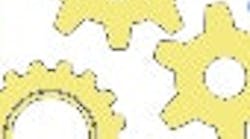We periodically look at how lean manufacturing impacts machine builder companies. Sometimes, its how the builder can benefit from lean. Other times, its how a customers lean efforts impact them as a supplier.
Lean Maintenance, written by Joel Levitt, published in June by Industrial Press, has a chapter on The Lean Machine, which recognizes that these machines cost no more than they have to, given their function. These machines have no unused systems or capabilities.
Levitt writes, The first thing to be overcome for [acceptance of] lean machines is the limited attitude toward acquisition costs. Buying a machine on low bid will rarely result in a lean environment. Lean machines need time, thought and money.
He reminds readers that this isnt a new idea. There is a well-understood way to approach design or acquisition that will result in lean machines. He says look at life cycle costs, where acquisition costs are just one part.
Whether youre the machine builder or machine buyer, Levitt points to the difficulty of getting decision makers to change their habits. Another issue is how you institutionalize change, he writes. The human tendency is to fall back on older patterns. The important thing is to make the new change structurally. Make some new changes on the floor, flow or process to anchor the new reality.
Part of the chapter discusses the lean journey of furniture maker Hon Manufacturing. Its an interesting thought exercise to consider how a machine builder could and should be part of this trip.
It took several years of hard lean conversion experience before folks thought the stuff might actually work. At that point, we started to do machine modification work in addition to the setup reduction we did early on. One of our first efforts was to right-size a press brake.
In the first year, they started by buying a 6-ft long brake. In the second, theyd formed a machine design-and-build group, and designed a 3-ft long brake.
In the third year, they were down to 2-ft, but they chose to use expensive, more-complex, variable pressure hydraulics, just in case.
By the fifth year, they finally got it but realized their perceived need had been wrong. Brake right-sizing wasnt the right goal. Building functional, self-actuating tooling was the real goal. Basically, it took us eight years to understand the lean-machine concept well enough to consistently produce such equipment.
The bad news: So far, it has not been possible to get machine builders to head down this path. Probably, it takes so long because it goes against fundamental machine concept paradigms they hold dear.
As a builder, where are you with this? Can a lean approach such as this one build an exceptional, long-lasting relationship with a customer? Or is it a short-lived enlightenment that often leads down a costly blind alley?




